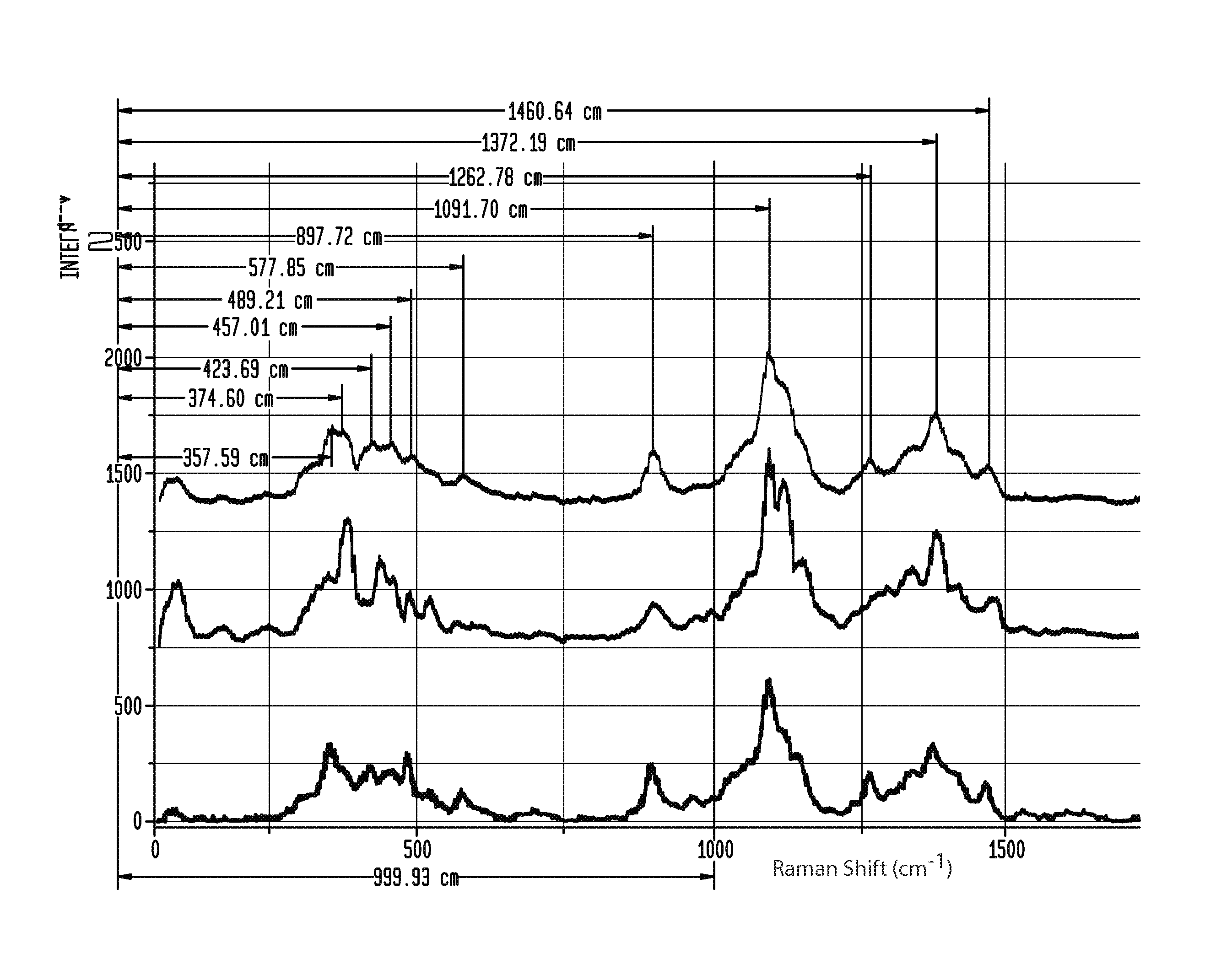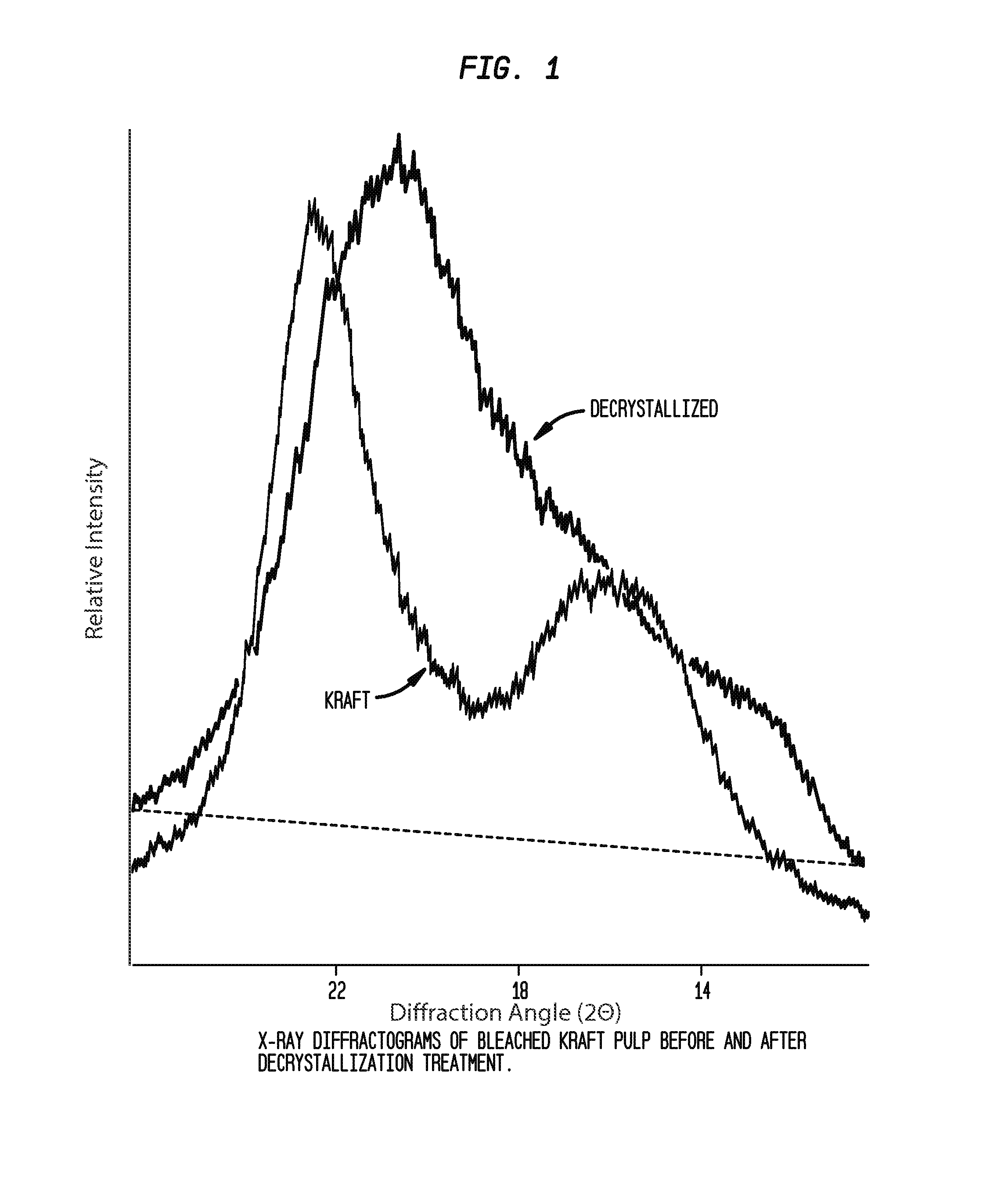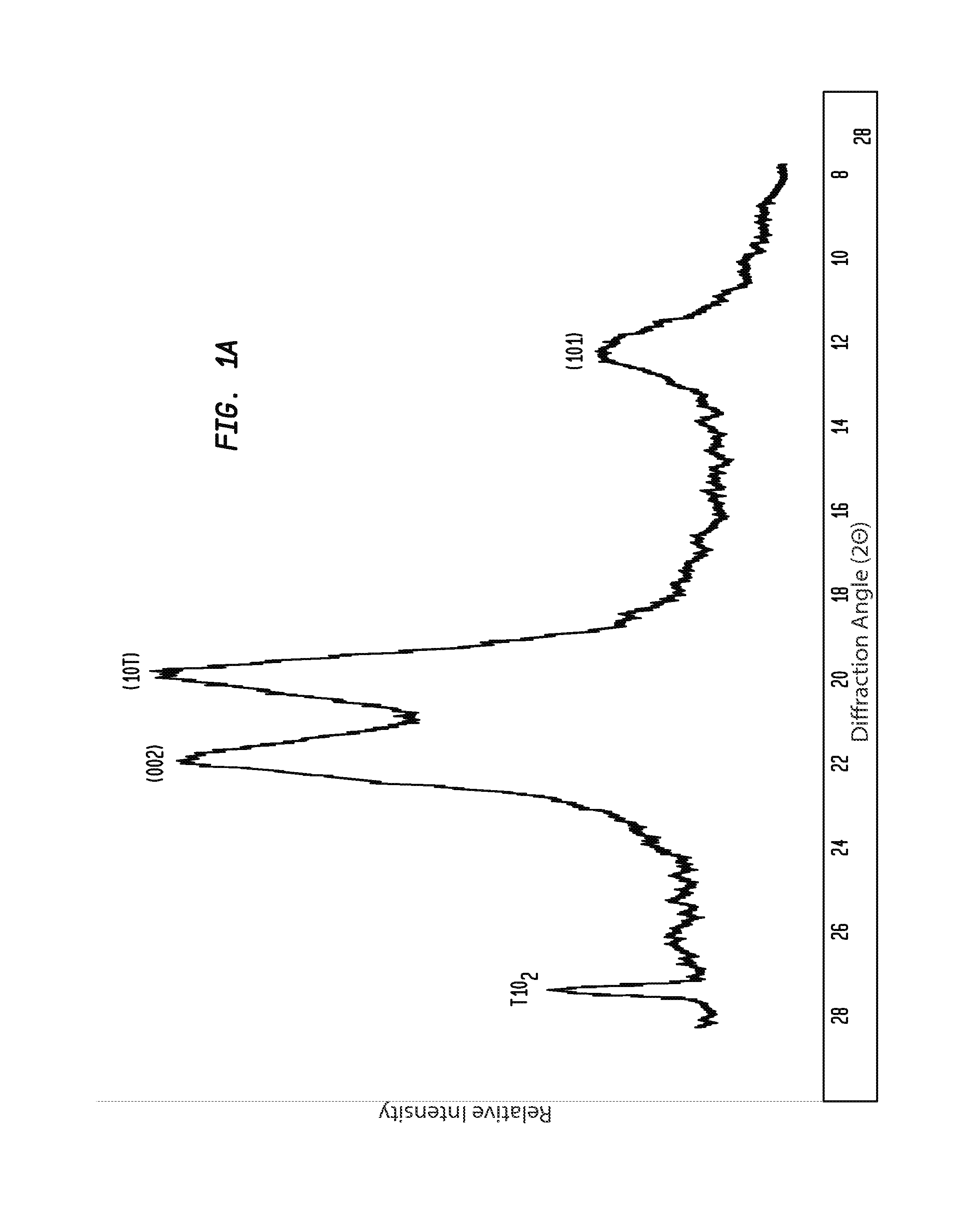Tissue products incorporating nanoporous cellulose fiber
a technology of nanoporous cellulose and tissue products, which is applied in the directions of non-fibrous pulp addition, transportation and packaging, papermaking, etc., can solve the problems of reducing the crystallinity of cellulose, increasing the cost of methods, and increasing the cost of materials
- Summary
- Abstract
- Description
- Claims
- Application Information
AI Technical Summary
Benefits of technology
Problems solved by technology
Method used
Image
Examples
example 2
[0203]Southern pine kraft was treated as in Example 1 and the Raman spectrum therefor was measured. The results comparing treated to untreated pulp are shown in FIG. 28.
example 3
[0204]Northern Hardwood Kraft was treated as in Example 1, and the Raman spectrum therefor was measured. The results comparing treated to untreated pulp are shown in FIG. 29.
example 4
[0205]Avicel crystalline cellulose was treated as in Example 1, and the Raman spectrum therefor was measured. The results comparing treated Avicel to Cellulose I and Cellulose II are shown in FIG. 30. On the right hand side of the peak near 2888 for the mercerized Avicel, a group of three ledges L can be perceived at about halfway up the peak while a pair of saw-teeth S can be perceived between 3400 and 3500 cm−1. These particular conformations appear to be peculiar to mercerized cellulose and in cases of doubt can be used to distinguish the Raman spectrum of mercerized cellulose from nanoporous, laterally expanded, cellulose in which the descent from the peak near 2888 cm−1 is smooth and without inflection points and only one local maximum is observed between 3200 cm−1 and 3600 cm−1.
PUM
| Property | Measurement | Unit |
|---|---|---|
| 2θ | aaaaa | aaaaa |
| 2θ | aaaaa | aaaaa |
| 2θ | aaaaa | aaaaa |
Abstract
Description
Claims
Application Information
 Login to View More
Login to View More - R&D
- Intellectual Property
- Life Sciences
- Materials
- Tech Scout
- Unparalleled Data Quality
- Higher Quality Content
- 60% Fewer Hallucinations
Browse by: Latest US Patents, China's latest patents, Technical Efficacy Thesaurus, Application Domain, Technology Topic, Popular Technical Reports.
© 2025 PatSnap. All rights reserved.Legal|Privacy policy|Modern Slavery Act Transparency Statement|Sitemap|About US| Contact US: help@patsnap.com



